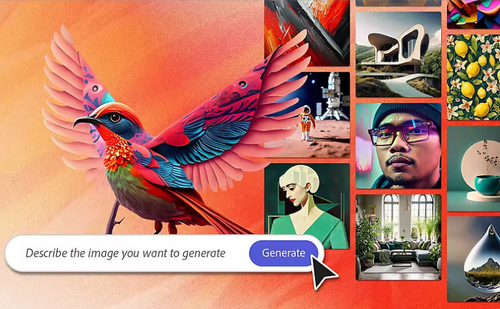Adobe's highly anticipated Firefly web service has finally gone global, with text prompts available in a staggering 100 languages; including the fictional Klingon language.
The user interface is accessible in 20 languages, catering to a wide global audience. This move by Adobe aims to expand access to Firefly so that more users can unleash their creativity and bring their ideas to life in their preferred languages. In an astonishing display of its success, Adobe revealed that Firefly has already generated over 1 billion assets on the web and in Photoshop, making it one of the most successful beta releases in the company's history.

Ely Greenfield, the Chief Technology Officer of Digital Media at Adobe, expressed his amazement at the remarkable ways creators have utilized Firefly to produce stunning images and text effects within just three months of its initial launch. The initial release of Firefly took place in March, starting with the web interface before expanding to integration with popular software such as Photoshop, Illustrator, and Express.

What distinguishes Adobe from other players in this field is its commitment to ensuring the commercial safety of the images generated by Firefly. The Firefly model has been trained on Adobe's extensive stock imagery service, guaranteeing that the assets created are both visually appealing and legally sound. This assurance has garnered the trust of enterprise users, as Adobe even offers indemnification to further ensure the protection of their clients' intellectual property. To satisfy the curiosity of users around the world, Adobe has shared an extensive list of the supported languages for Firefly. Among them are widely spoken languages such as Afrikaans, French, German, Japanese, Portuguese (Brazilian), Spanish, and Welsh.
The inclusion of fictional languages like Klingon demonstrates Adobe's dedication to embracing creativity in all its forms, no matter how unconventional. Adobe's decision to make Firefly available in multiple languages serves a dual purpose. First, it allows users from diverse linguistic backgrounds to engage with the software on a deeper level, ensuring that language is not a barrier to creativity. Second, it expands Adobe's user base by tapping into new markets and allowing users worldwide to express themselves in their native languages. With Firefly's astounding success and continued expansion, it is clear that Adobe aims to solidify its position as a market leader in web services and software for creators. By combining cutting-edge technology with language accessibility, Adobe empowers individuals and businesses alike to unlock their full artistic potential. Whether it's stunning visual effects or captivating text designs, Firefly provides users with the tools they need to turn their visions into reality.

As the global demand for software that transcends language barriers continues to grow, Adobe remains at the forefront of innovation in the industry. The availability of Firefly in 100 languages, including Klingon, is a testament to Adobe's commitment to ensuring that all users, regardless of their native tongue, can access the tools they need to create visually captivating and commercially safe assets. With Firefly, Adobe has once again pushed the boundaries of what is possible in the world of software, revolutionizing the creative landscape and helping users across the globe bring their imagination to life in their preferred languages.

